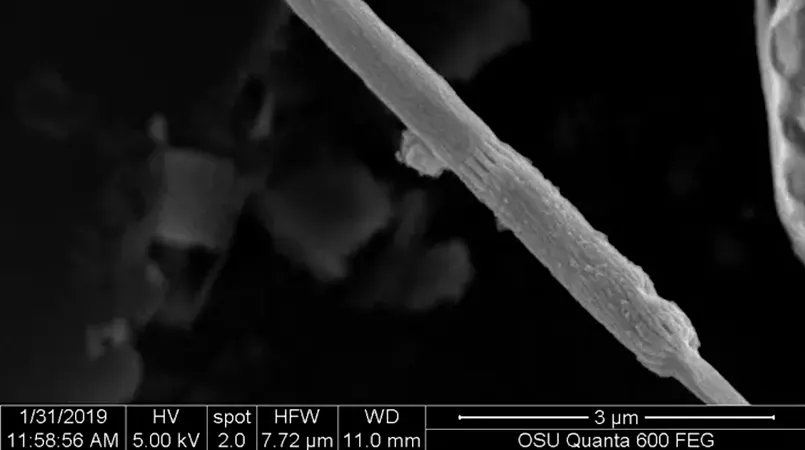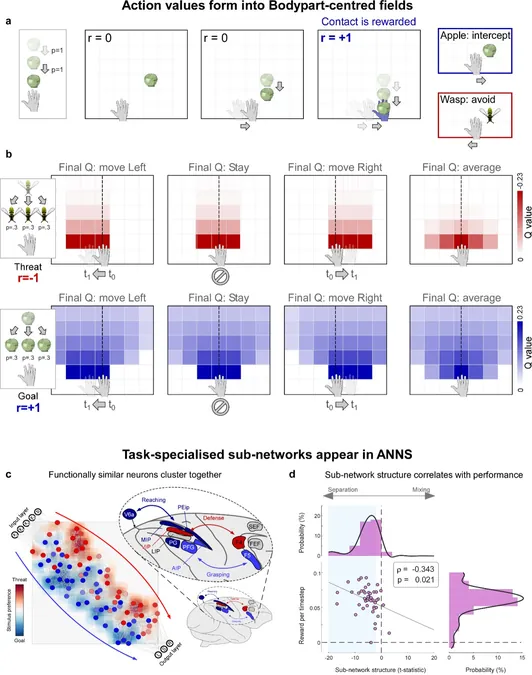
Meet Electrothrix yaqonensis: The Groundbreaking Bacteria That Could Revolutionize Bioelectronics!
2025-04-27
Author: Nur
In a groundbreaking discovery, scientists have unearthed a brand-new species of bacteria that doubles as a natural electrical conductor. This remarkable find, known as Ca. Electrothrix yaqonensis, could pave the way for innovative bioelectronic devices spanning various fields, including medicine, industry, food safety, and environmental conservation.
Found in the mudflats of Oregon's Yaquina Bay, this unique species pays tribute to the area's Indigenous population, the Yaqona people, highlighting their historical connection to the land. The findings were unveiled in a recent issue of Applied and Environmental Microbiology.
Led by Cheng Li, a postdoctoral researcher at Oregon State University, and Clare Reimers, a distinguished professor emerita, the team identified this extraordinary bacterium during their investigations into the sediments of the estuary. The cable bacteria are known for their elongated rod-shaped cells, which connect end to end, creating filaments that can span several centimeters.
Unlike most bacteria, Ca. Electrothrix yaqonensis possesses an electrical conductivity that enhances its metabolic efficiency in sediment environments—an evolutionary boon for survival.
What makes this species particularly fascinating is its hybrid genetic makeup. It showcases characteristics not only from its own Ca. Electrothrix genus but also from the related cable bacteria genus, Ca. Electronema. "This new discovery acts as a bridge—a critical clue to understanding the evolution of these bacteria and their functions in diverse ecosystems," stated Li.
The bacterium's unique structure sets it apart from its relatives, featuring striking surface ridges that are up to three times wider than those observed in other cable bacteria. What’s even more intriguing? These ridges house highly conductive fibers made of rare nickel-based molecules.
Through their prolonged electron transport capabilities, these bacteria can link electron acceptors like oxygen to donors such as sulfide in deeper sediment layers, playing a vital role in nutrient cycling and geochemical processes. They are particularly promising for bioremediation, as they can potentially detoxify hazardous pollutants in sediment.
Moreover, the innovative design of their nickel-rich proteins could inspire the next generation of bioelectronics, positioning Ca. Electrothrix yaqonensis as a groundbreaking player in the future of sustainable technology.
Named in honor of the Yaqona Tribe, the research not only acknowledges their ancestral connections to the Yaquina Bay but also underlines their role in promoting ecological knowledge and sustainability.
With contributions from esteemed institutions across Europe and support from various research funding bodies, the collaborative effort underscores the global significance of this discovery.
In a world increasingly focused on sustainable solutions, the emergence of Ca. Electrothrix yaqonensis could be the catalyst we need to reshape our understanding of bioelectronic applications and environmental conservation.


 Brasil (PT)
Brasil (PT)
 Canada (EN)
Canada (EN)
 Chile (ES)
Chile (ES)
 Česko (CS)
Česko (CS)
 대한민국 (KO)
대한민국 (KO)
 España (ES)
España (ES)
 France (FR)
France (FR)
 Hong Kong (EN)
Hong Kong (EN)
 Italia (IT)
Italia (IT)
 日本 (JA)
日本 (JA)
 Magyarország (HU)
Magyarország (HU)
 Norge (NO)
Norge (NO)
 Polska (PL)
Polska (PL)
 Schweiz (DE)
Schweiz (DE)
 Singapore (EN)
Singapore (EN)
 Sverige (SV)
Sverige (SV)
 Suomi (FI)
Suomi (FI)
 Türkiye (TR)
Türkiye (TR)
 الإمارات العربية المتحدة (AR)
الإمارات العربية المتحدة (AR)